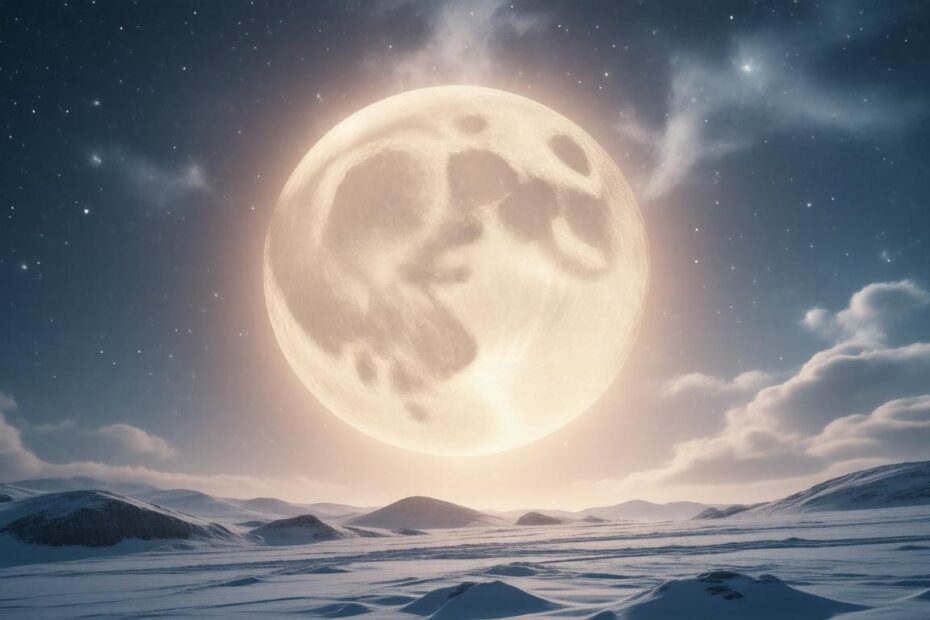🌟 Daily Awakening Quiz 🌟
The Cold Full Moon, also known as the Long Night Moon or the Moon Before Yule, is a remarkable celestial event that takes place in December, marking the onset of winter in the Northern Hemisphere. This article explores the origin, significance, and traditions surrounding the Cold Full Moon and provides insights on when to observe this breathtaking lunar phenomenon.
What is the Cold Full Moon?
The Cold Moon is December’s full moon, named for the frigid temperatures and long nights associated with this time of year. Traditionally, it is observed during the month when the weather turns notably cold, and its name is derived from various Native American and ancient cultural influences. For instance, the Mohawk refer to it as the Cold Moon, while the Mohican people call it the Long Night Moon, highlighting the moon’s prominence during the longest nights of the year, which coincide with the winter solstice.
Key Names and Etymology
The myriad names for December’s full moon reflect the deep connection between moon phases and seasonal changes. Some alternative names include:
- Snow Moon: Recognizing the likelihood of snowfall.
- Hoar Frost Moon: Acknowledging frost, which is common during this period.
- Drift Clearing Moon: Indicating the need to clear snow from pathways.
- Moon of the Popping Trees: Referencing the sounds of freezing and thawing wood.
In ancient Europe, the Cold Moon was celebrated as part of the Yule festivities, tying it to the winter solstice celebrations that herald the return of longer days.
When to Observe the Cold Full Moon
In 2024, the Cold Full Moon will occur on December 15 at 4:02 A.M. EST. While it peaks in the early hours, it is best viewed the night before when it appears nearly full in the sky. Observers can expect this full moon to shine brighter and longer than others, thanks to its high trajectory in the sky during this time of year.

Significance and Spiritual Practices
The Cold Full Moon symbolizes reflection, introspection, and closure, particularly as the year comes to a close. Many cultures have long celebrated the lunar cycle, integrating these celestial events into their rituals and spiritual practices.
Potential Rituals
During the Cold Moon, individuals are encouraged to engage in reflective practices such as:
- Journaling: Write about goals and desires for the upcoming year.
- Meditation: Use incense, sage, or other smoke-producing substances to enhance meditation and set intentions.
- Community Building: This period is ripe for reconnecting with friends and family, making it an ideal time for gatherings.
Astrological Influences
In December 2024, the Cold Moon will also be in Gemini, an air sign known for communication and intellectual engagement. This positioning encourages clear expression and sharing of ideas, making it a favorable time for discussions, writing, and social media projects.
Conclusion
The Cold Full Moon encompasses a rich tapestry of meanings—from its historical connections to winter traditions to its role in modern spiritual practices. Whether you’re a seasoned moon-watcher or a new enthusiast, taking the time to observe this celestial event can enrich your understanding of nature’s cycles and provide a moment of reflection as the year comes to a close. Embrace the magic of the Cold Moon this December and discover its enchanting glow against the wintry night sky.
